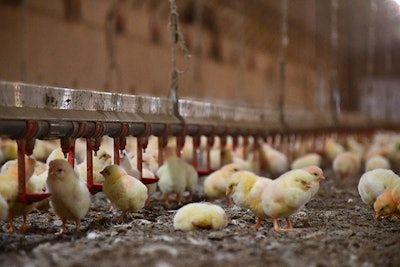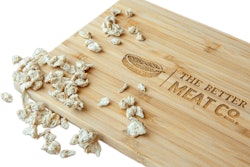
Catch trays placed underneath drinker lines can play a significant role in reducing litter moisture in commercial broiler houses, according to a new research project.
”Drinker line catch trays have been around for decades and though there is some debate about what effect they have may have bird health, it is generally found that the litter tends to be drier under the drinker lines when they are used, but the problem is that there’s never been research to back it up,” explained Connie Mou, a Technical Service Manager at Jones-Hamilton Co., who led the project as part of her Ph.D. research.
Why dry litter is important
Long-term contact with wet litter can result in lesions on the plantar surface of poultry feet commonly known as foot-pad dermatitis. The skin condition has been linked to reduced live weight, reduced meat yield and increased whole carcass condemnations. In addition, we litter has been widely associated with higher house ammonia levels.
“I think the industry recognizes that having good litter conditions is important for a variety of reasons, including bird health, bird performance and bird welfare. It just ticks so many boxes because that bird is sitting on that litter all the time,” Michael Czarick, Department of Poultry Science – Engineer, The University of Georgia, said.
“In general, when we’re looking to keep litter dry, it’s not a single thing. It’s a variety of things you have to do to keep the litter dry and keep birds healthy.”
Following up to ensure real-world applications
The research project builds on a previous study that examined the use of high-volume circulation fans and humidity control as a way to improve litter and footpad quality. The research found that high-volume circulation fans and humidity control were very effective in lowering litter moisture levels and incidences of foot pad lesions for the first few weeks of a flock but these benefits were reduced the last couple weeks, primarily due to the build-up of moisture underneath drinker lines.
“We believed that the addition of catch trays to the high-volume circulation fans and house humidity control was the next logical step to minimize litter moisture over the course of an entire flock. By adding catch trays to drinker lines, we wanted to see if we could extend the beneficial effects seen when using a high-volume circulation fan system in a house with humidity control. Overall, the study pretty much showed that we are able to delay wet litter under the drinker lines for at least another week or two,” Mou said.
The U.S. Poultry and Egg Association (USPOULTRY) provided funding for the project, which was conducted on a commercial broiler farm.
“It’s one thing to do a study in a lab. It’s another to do it out in the field. It’s important to do this type of field research because we need the grower’s opinion,” Czarick added. “What’s always nice is after you do a study like this is to see if the grower continues to do it.”
Like what you just read? Sign up now for free to receive the Poultry Future Newsletter.
















